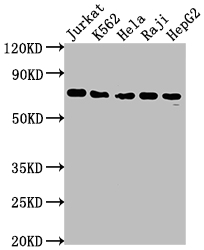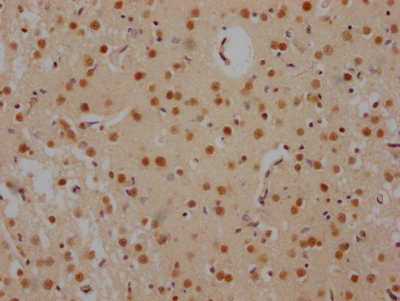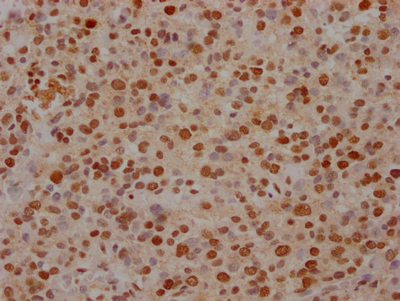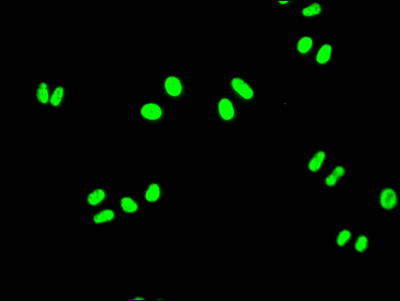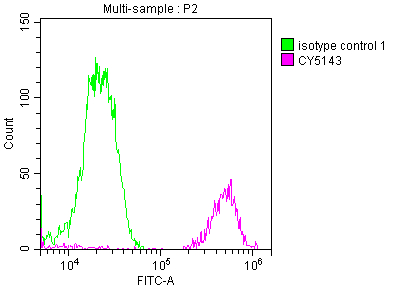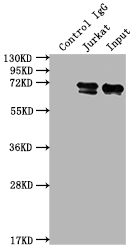FUBP1 is a DNA and RNA binding protein that mainly regulates the transcription of its target genes. FUBP1 stimulates cell proliferation, suppresses apoptosis, and enhances cell migration by regulating complex networks. FUBP1 is up-regulated in various types of cancer, including renal cell carcinoma, breast cancer, prostate cancer, and bladder cancer. Loss-of-function analyses of FUBP1 reveal its essential roles in hematopoietic stem cell maintenance and survival.
This recombinant FUBP1 antibody was developed with the Single B cell platform. The main process included identification and isolation of single B cells; amplification and cloning of FUBP1 antibody gene; expression, screening, and identification of antibody specificity. And this FUBP1 antibody has been validated in ELISA, WB, IHC, IF, FC, IP.

